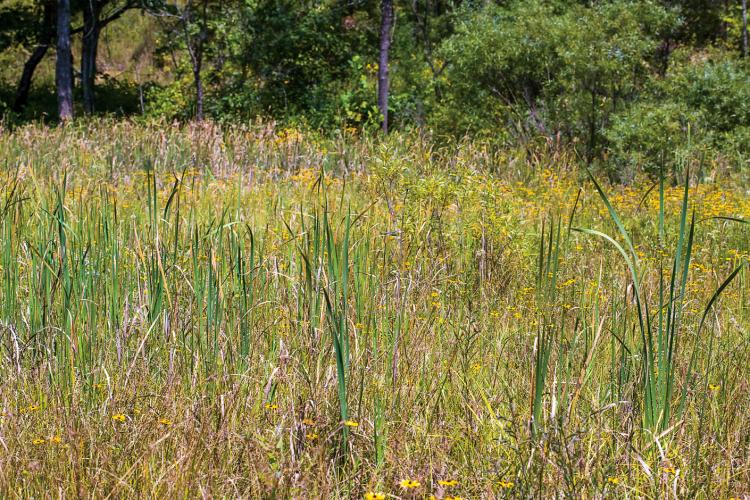Wet prairies, fens, and temporary (or ephemeral) wetlands play an important role in local ecosystems. Reptiles, migrating shorebirds, waterfowl, and insects all use these wetlands. Various frogs and salamanders rely on these wetlands for breeding sites.
Many wetlands that once were temporary are now permanent pools of water that people have stocked with fish. This limits their usefulness for frogs and salamanders because fish prey on the eggs and the young of amphibians. It’s no coincidence that most of the rare amphibians in Missouri use temporary pools for breeding.
Amphibians that commonly use temporary pools:
- Boreal chorus frog
- Spring peeper
- Southern leopard frog
- Tiger salamander
- Northern crawfish frog (prairie areas)
- Great Plains narrow-mouthed toad (prairie areas)

Title
Choosing a Temporary Pool Location
When selecting a site for your pool, look for natural low spots or dips in the landscape that may hold water for short periods of time, particularly during the spring. These sites can occur almost anywhere — on flood plains, uplands, forests, fields, or pastures.
Areas on flood plains are especially attractive because they can fill up from multiple sources: precipitation, run-off from the hills, seep water, or overland flow. These areas may already have wetland plants, such as smartweed, sedges, and wetland-adapted grasses.
Title
Constructing a Temporary Pool
If the site holds water for two or three months, there is a good chance it is already a functioning wetland and improvements such as levees and water control structures are not needed. Remember, unaltered, naturally occurring wetlands are often highly functional, diverse habitats. Conducting any “improvements” on these wetlands can actually damage or degrade them.
Ditches, tile drains, spoil piles, or levees are typical alterations that have modified a wetland’s hydrology. Filling in ditches, flattening out spoil piles or levees, and breaking tile lines are common practices to restore the groundwater table or overland flow of water to these sites.
A small depression can be enhanced or constructed in less than a day using a small bulldozer or a tractor and blade. A depth of 1–2 feet is ideal, and the pool should have sloping sides (at least a 4:1 slope or flatter). Pools can be of almost any size or shape, depending on the site. Trees around the site should be left in place. Flatten out the sides of the spoil piles (removed material) to a 4:1 slope or flatter.
Title
Introducing Plants
Once the pool is constructed, there is usually no need to introduce aquatic plants or animals. The soil in a seasonally wet area will frequently have an existing seed bank of wetland plants, and animals are good at finding wetlands on their own.
If plants are introduced to provide a jump-start or add wetland species that are now rare in the region, do not use aggressive species such as cattails, purple loosestrife, or common reed (phragmites). These species will reduce the plant diversity and form less productive monocultures.
If done correctly, your wetland will dry up or become wet as the climate allows and be used by a range of wetland plants and animals.





















